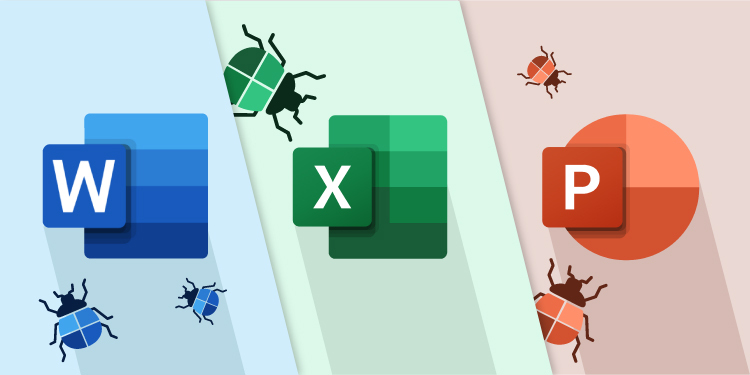What Is a Macro Virus and How Do I Remove it?
What is a Macro Virus?
Macro virus is a type of computer virus that corrupts a software program and performs certain actions while the software is running. This usually affects word processors like Microsoft Word and Microsoft Excel. It is a sequence of commands that transfers from one file to another.
Macro viruses are written in macro language and are visually basic to the application. You usually receive these viruses through electronic documents and when you download, click or open this file, the virus infects your network and also harms other documents. There are some common ways to spread macro virus in the computer, we list a few of them below:
- Spam emails containing attachments.
- File sharing via disk or network.
- Downloading files from the untrusted resource on the Internet.
 Click here to download Free RAM Free Antivirus
Click here to download Free RAM Free Antivirus
How Do Macro Viruses Work?
Hackers manipulate macros and are available in almost all types of software. Macros make all the little repetitive tasks we do bearable. For example, when we open a new document in Word, we use a Normal template based on a Normal macro. Your new document comes preloaded with the fonts you like, the paper size you use, and more.
Hackers love to manipulate the normal macro, experts say, because users can lean on it dozens of times a day. But you can also have macros that help you:
- Load Word.
- Open an existing document.
- Create a new document.
- Close a document.
- Quit Word.
Each of these could be touched or altered by a malicious macro. Or the hacker could create a new macro from scratch to infect your files. When your computer gets infected, you tend to pass it on to others. Any file on your server can be affected, and every time a colleague opens a file, it deploys again.
Types of Macro Viruses
Macro viruses can be found in several different forms. Although some see them as a relic of the late 1990s, they have actually made a resurgence in recent years, forcing users to be more vigilant.
- Conceptual virus
Concept was the first macro virus, appeared in July 1995 and targeted Microsoft Word. Macro viruses then became the dominant type of virus.
- Melissa virus
Melissa made history as the first macro virus with the email worm trait and began spreading through email on March 26, 1999, infecting tens of thousands of people within hours. It was one of the most serious epidemics in Internet history.
How do I know if I have a macro virus?
Once activated, macro viruses spread quickly. It’s possible that the first time you know you are infected is when your contacts start calling you asking for a strange email that you supposedly sent.
Other things to watch out for are:
- Your computer is running slower than usual
- Strange changes are made to your documents
- Missing menu items in your software application
- The appearance of unusual dialog boxes that you don’t normally see
- Your computer saves files as “templates”
- Your computer prompts you for passwords to access files that are usually not password protected
How can I prevent macro viruses from infecting my computer?
Fortunately, there are many steps you can take to protect your computer from macro viruses. Here are some of our top tips:
- Use Strong Antivirus Software: Downloading RAM antivirus software is the most effective way to protect your computer from macro viruses. It alerts you whenever it detects any suspicious files or harmful links.
- Keep your anti-virus software up to date: Make sure your computer is running the most recent version of the chosen anti-virus software and install all security patches. This way, it will be able to protect your computer from new viruses and malware threats.
- Activate the spam filter in your e-mail. This should eliminate many phishing emails that may contain macro viruses.
- Be careful when opening emails or attachments. Do not open attachments from unknown senders. And even if the attachment appears to be from one of your trusted contacts, don’t open it right away unless you’re expecting an email with an attachment. And as we mentioned before, be especially wary of any strange wording or formatting.
- Enable all macro security features: Microsoft Word and Excel have macro security features, so be sure to enable them.
- Stick to Safe Websites: Malware can get onto your computer if you access suspicious websites. Most antivirus software and web browsers will warn you if you try to access an unsecured site.
- Do not click on banner ads: This may sound obvious, but avoid clicking on banner ads as they can often contain suspicious links.
This article covers the answers to some of your frequently asked questions:
People May Also Like…
Data protection
What is the data protection Data protection has grown to be of utmost importance to both individuals and organizations in the connected. world of today, where information travels quickly across many digital
What is a security software
Security software It is impossible to overstate the value of strong security software in today's digital world. Individuals and organizations must take proactive measures to safeguard their sensitive data and defend against
Website reputation analysis
Website reputation analysis Websites are incredibly important for establishing an online presence for businesses, organizations, and people in the modern world. Analysis and evaluation of a website's reputation are crucial because there are
What is a Virtual private network (VPN)
What is a virtual private network (VPN) Virtual private network (VPN) have become an essential tool for both individuals and businesses in a time when online privacy and security are of the







